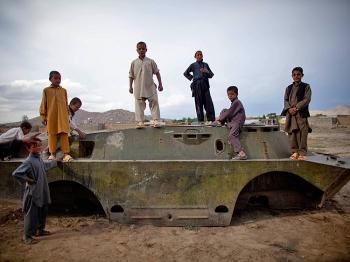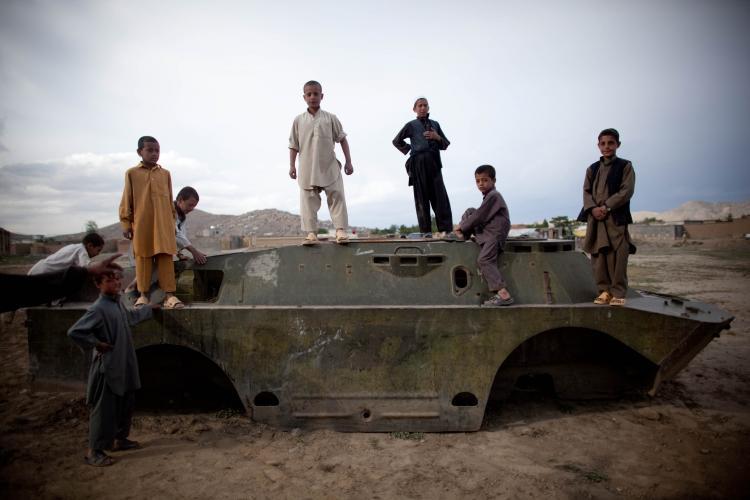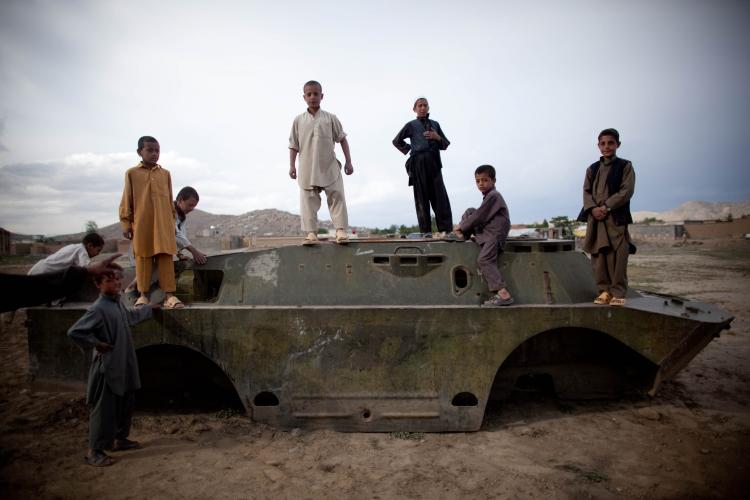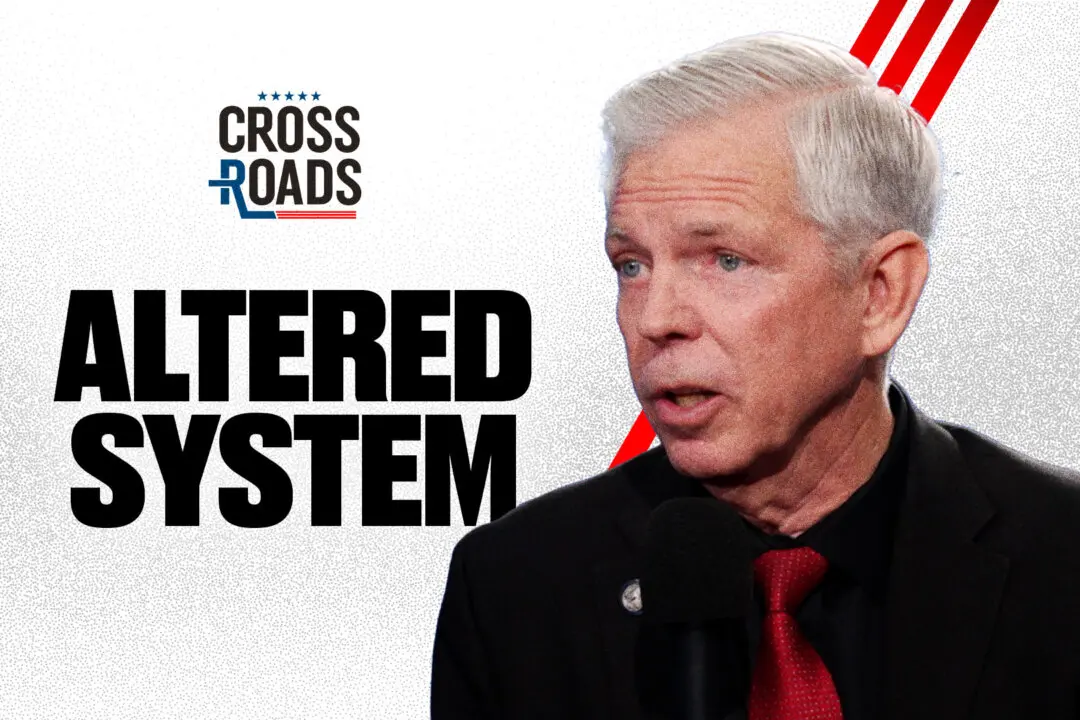As the ancient kings of Afghanistan, the Pashtun today constitute nearly the full ranks of the Taliban while also holding a majority in the Afghan government. The war in Afghanistan is no simple religious war. For the Pashtun, it is an ethnic war and a war of revenge; one of foreign invasion and plots by warring tribes.
Complicated tribal dynamics in Afghanistan are not given their due weight by coalition leaders, but they will have a big impact on how things play out in Afghanistan after the U.S. withdrawal.
There is a pervading suspicion among the Pashtun that rival tribes are colluding with U.S. forces to destroy them. According to author Jere Van Dyk, he has heard this belief voiced by Pashtun from the lowest ranks all the way to high-level government officials.
“The Pashtuns feel that they are under attack,” said Van Dyk in a phone interview.
Van Dyk lived alongside the mujahedeen, Muslim fighters, in the 1980s and maintains contact with high-ranking Afghan officials to this day. In 2008, he attempted to disappear into Pashtun culture and infiltrate the Taliban, but was captured. He recounted the experience in his book, “Captive, My Time As A Prisoner Of The Taliban.”
The Pashtun are the largest tribe in Afghanistan, comprising 42 percent of the population.
Aside from coalition forces, there are three main players in the Afghan conflict: The Tajiks in northern Afghanistan, the Punjabis in Pakistan, and the Pashtun whose tribal region is mostly in the south and then stretches 80 miles east into Pakistan.
While nearly all Taliban insurgents are Pashtun, the officer core of the Afghan army is primarily Tajik, and nearly 80 percent of the Pakistan army is Punjabi.
Thus, it is impossible to consider Afghanistan in isolation from Pakistan. “This in many ways is an ethnic war, between the Punjabis which control the bureaucracy and military in Pakistan, and the Pashtuns of the tribal areas and across the area into Pakistan,” says Van Dyk.
“Pakistan is going to try to control this until the very end,” he said.
“If you talk to any Pashtun along the tribal belt on both sides of the border, they will tell you that Pakistan is trying to create chaos, or the image of chaos, in order to get money from the U.S.,” says Van Dyk.
The Tajiks aligned themselves successfully with the northern alliance—a loose coalition of mostly non-Pashtun groups united to defeat the Taliban—and with the United States at the very beginning, explains Van Dyk.
The United States is also making a common mistake in operations in the Pashtun Afghan south, by giving the operations names in the Tajik language, a Persian dialect called Dari.
“This is telling every single Pashtun that the United States has allied itself with the Tajiks,” he said.
The Pashtun believe they are caught in the middle of a conflict meant to crush them.
In Pashtun culture, revenge is not merely an act of emotion. Rather, badal (revenge) is a responsibility required by their unwritten law (Pashtunwali). This concept is one of the main drivers of the Afghan insurgency.
“The insurgency, which almost exclusively involves ethnic Pashtuns, is strongest in the Pashtun-dominated south and southeast of the country,” although it is present in smaller pockets of Pashtuns throughout Afghanistan, according to a report from the International Institute for Strategic Studies (IISS).
“Many Taliban ‘foot soldiers’ are young men who take up arms on a part-time basis. They may be motivated more by local grievances, including the desire to avenge friends and family members killed in the fighting, than by ideology,” states the IISS report.
Van Dyk said he witnessed this firsthand. “Based on my experiences, I was told and observed that many of the young men had joined the Taliban not because of money, but because of something that happened to their family, and it was a matter of badal—because of what you did to us, I have an obligation.”
The problem of insurgency in Afghanistan led the United States to adopt a counterinsurgency (COIN) strategy of winning “hearts and minds,” in the country. The strategy is based on clearing enemy fighters from targeted areas then holding ground while building government and infrastructure.
Pashtun law is a distant concept from modern governance. From the viewpoint of Western society, the Pashtun regions are lawless, but this could not be farther from the truth. What they have is an unwritten code of honor rooted in a culture believed to date back at least 5,000 years.
In a culture where a man’s honor determines his place in a society, keeping face and maintaining the Pashtun code of honor carry deep importance. The need to enforce badal has thus kept the Pashtun in recurring conflict throughout history. The Pashtun are divided into many separate tribes and clans, and government takes the form of jirgas—tribal councils demanding unanimous agreement for an act to move forward.
Lack of consensus in jirgas, however, can lead to near endless tribal war due to the concept of badal and maintaining honor, according to a October 2009 report from the Tribal Analysis Center.
“In order for a winner to emerge, there must be losers and those individuals, and their loyal followers, will normally take up arms to recover lost honor from those who won in the council,” states the report.
Due to the butterfly affect of revenge, battles over lost honor can “become endless wars under their chivalry code they call ‘pashtunwali’ that requires badal, or revenge,” states the report.
Since many Taliban fighters may have joined the conflict to seek badal, the 2014 troop pullout from Afghanistan could reduce the insurgency, said Van Dyk. However, what the Americans are leaving behind, namely a centralized democratic government, could remain a target.
Under the former primarily Pashtun Taliban Islamic regime there was no separate concept for religion and government, which bespeaks how the Pashtun view the importation of democracy. “The Taliban will call democracy a western religion,” said Van Dyk.
The Pashtun have an inherent belief that it is their right to rule the country. They “see themselves as Afghanistan,” Van Dyk said.
Their concept of a “right to lead” ties both into their being the largest tribe in Afghanistan, and into their having governed the country since its founding, with few exceptions in history, according to a March 2 report from the Congressional Research Service (CRS).
This dynamic is reflected in the current Afghan government, headed by President Hamid Karzai. “Karzai is a Durrani Pashtun, and his Cabinet and inner advisory circle has come to be progressively dominated by Pashtuns and to exclude members of the other communities,” states the CRS report.
However, even rival Pashtan groups are vying for power, each wanting to lead the country, says Van Dyk.
The multiple layers of tribal dynamics put the United Sstates in a tough spot with leaving the country in 2014.
Afghan senators warned in March that the 2014 troop pullout could plunge the country into civil war, according to the United Nations Assistance Mission in Afghanistan.
Van Dyk agrees, saying almost without doubt, “if we pulled out now there would be a civil war.”
Complicated tribal dynamics in Afghanistan are not given their due weight by coalition leaders, but they will have a big impact on how things play out in Afghanistan after the U.S. withdrawal.
There is a pervading suspicion among the Pashtun that rival tribes are colluding with U.S. forces to destroy them. According to author Jere Van Dyk, he has heard this belief voiced by Pashtun from the lowest ranks all the way to high-level government officials.
“The Pashtuns feel that they are under attack,” said Van Dyk in a phone interview.
Van Dyk lived alongside the mujahedeen, Muslim fighters, in the 1980s and maintains contact with high-ranking Afghan officials to this day. In 2008, he attempted to disappear into Pashtun culture and infiltrate the Taliban, but was captured. He recounted the experience in his book, “Captive, My Time As A Prisoner Of The Taliban.”
The Pashtun are the largest tribe in Afghanistan, comprising 42 percent of the population.
Aside from coalition forces, there are three main players in the Afghan conflict: The Tajiks in northern Afghanistan, the Punjabis in Pakistan, and the Pashtun whose tribal region is mostly in the south and then stretches 80 miles east into Pakistan.
While nearly all Taliban insurgents are Pashtun, the officer core of the Afghan army is primarily Tajik, and nearly 80 percent of the Pakistan army is Punjabi.
Thus, it is impossible to consider Afghanistan in isolation from Pakistan. “This in many ways is an ethnic war, between the Punjabis which control the bureaucracy and military in Pakistan, and the Pashtuns of the tribal areas and across the area into Pakistan,” says Van Dyk.
“Pakistan is going to try to control this until the very end,” he said.
“If you talk to any Pashtun along the tribal belt on both sides of the border, they will tell you that Pakistan is trying to create chaos, or the image of chaos, in order to get money from the U.S.,” says Van Dyk.
The Tajiks aligned themselves successfully with the northern alliance—a loose coalition of mostly non-Pashtun groups united to defeat the Taliban—and with the United States at the very beginning, explains Van Dyk.
The United States is also making a common mistake in operations in the Pashtun Afghan south, by giving the operations names in the Tajik language, a Persian dialect called Dari.
“This is telling every single Pashtun that the United States has allied itself with the Tajiks,” he said.
The Pashtun believe they are caught in the middle of a conflict meant to crush them.
A Circle of Vengeance
In Pashtun culture, revenge is not merely an act of emotion. Rather, badal (revenge) is a responsibility required by their unwritten law (Pashtunwali). This concept is one of the main drivers of the Afghan insurgency.
“The insurgency, which almost exclusively involves ethnic Pashtuns, is strongest in the Pashtun-dominated south and southeast of the country,” although it is present in smaller pockets of Pashtuns throughout Afghanistan, according to a report from the International Institute for Strategic Studies (IISS).
“Many Taliban ‘foot soldiers’ are young men who take up arms on a part-time basis. They may be motivated more by local grievances, including the desire to avenge friends and family members killed in the fighting, than by ideology,” states the IISS report.
Van Dyk said he witnessed this firsthand. “Based on my experiences, I was told and observed that many of the young men had joined the Taliban not because of money, but because of something that happened to their family, and it was a matter of badal—because of what you did to us, I have an obligation.”
The problem of insurgency in Afghanistan led the United States to adopt a counterinsurgency (COIN) strategy of winning “hearts and minds,” in the country. The strategy is based on clearing enemy fighters from targeted areas then holding ground while building government and infrastructure.
Pashtun law is a distant concept from modern governance. From the viewpoint of Western society, the Pashtun regions are lawless, but this could not be farther from the truth. What they have is an unwritten code of honor rooted in a culture believed to date back at least 5,000 years.
In a culture where a man’s honor determines his place in a society, keeping face and maintaining the Pashtun code of honor carry deep importance. The need to enforce badal has thus kept the Pashtun in recurring conflict throughout history. The Pashtun are divided into many separate tribes and clans, and government takes the form of jirgas—tribal councils demanding unanimous agreement for an act to move forward.
Lack of consensus in jirgas, however, can lead to near endless tribal war due to the concept of badal and maintaining honor, according to a October 2009 report from the Tribal Analysis Center.
“In order for a winner to emerge, there must be losers and those individuals, and their loyal followers, will normally take up arms to recover lost honor from those who won in the council,” states the report.
Due to the butterfly affect of revenge, battles over lost honor can “become endless wars under their chivalry code they call ‘pashtunwali’ that requires badal, or revenge,” states the report.
Since many Taliban fighters may have joined the conflict to seek badal, the 2014 troop pullout from Afghanistan could reduce the insurgency, said Van Dyk. However, what the Americans are leaving behind, namely a centralized democratic government, could remain a target.
Under the former primarily Pashtun Taliban Islamic regime there was no separate concept for religion and government, which bespeaks how the Pashtun view the importation of democracy. “The Taliban will call democracy a western religion,” said Van Dyk.
Right to Rule
The Pashtun have an inherent belief that it is their right to rule the country. They “see themselves as Afghanistan,” Van Dyk said.
Their concept of a “right to lead” ties both into their being the largest tribe in Afghanistan, and into their having governed the country since its founding, with few exceptions in history, according to a March 2 report from the Congressional Research Service (CRS).
This dynamic is reflected in the current Afghan government, headed by President Hamid Karzai. “Karzai is a Durrani Pashtun, and his Cabinet and inner advisory circle has come to be progressively dominated by Pashtuns and to exclude members of the other communities,” states the CRS report.
However, even rival Pashtan groups are vying for power, each wanting to lead the country, says Van Dyk.
The multiple layers of tribal dynamics put the United Sstates in a tough spot with leaving the country in 2014.
Afghan senators warned in March that the 2014 troop pullout could plunge the country into civil war, according to the United Nations Assistance Mission in Afghanistan.
Van Dyk agrees, saying almost without doubt, “if we pulled out now there would be a civil war.”







